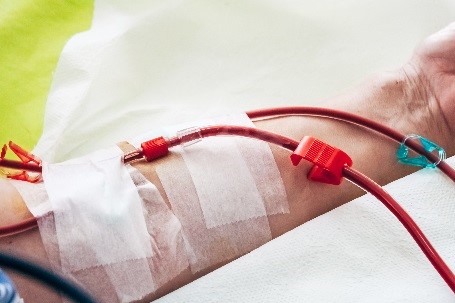Things to watch out for the arm with vascular access:
- Do not measure blood pressure, draw blood, nor receive intravenous fluid treatment on this arm.
- Avoid carrying heavy objects by this arm.
- Do not accessorized the wrist nor wear tight fitting cloth.
How to prevent vascular access related infection?
- Clean your arms well before each dialysis session.
- Avoid scratching your arms, which may result in wounds. If there are rashes or swelling on the skin, it must be treated as soon as possible.
- Avoid taking a shower immediately after dialysis. If taking a shower is necessary, do keep the puncture site dry.
- If the gauze covering the puncture wounds is wet, contaminated or tinged with blood, you must clean the wounds again and replace the gauze.
- Remove the gauze the next day after the dialysis and keep the puncture site dry.
What are the signs of vascular access obstruction?
- Absence of pulsation or vibration on the arterio-venous fistula (AVF).
- Absence of bruits (by stethoscope) over the arterio-venous fistula or graft (AVG).
- Painful and stiff feeling over the access.
- Once there are signs of vascular obstruction, please contact dialysis center immediately. We will consult cardiologists or cardiovascular surgeons for further examination and management.
Keep close monitoring for the patency of your vascular access.
Easy techniques such as palpating the AVF and checking the vascular sounds by stethoscope can help early detection of vascular obstruction. Please check the vascular access frequently.


